Keynote
Prof. Artur Bednarkiewicz, Polish Academy of Sciences, Poland
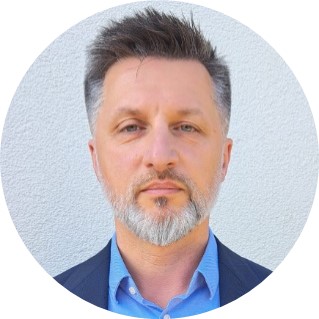
Artur Bednarkiewicz received his MSc Eng. in Physics and Biomedical Engineering from the Wroclaw University of Technology in Wroclaw, Poland, in 1993 and a PhD, habilitation and Institute professorship in Physics from the Institute of Low Temperature and Structure Research, Polish Academy of Sciences, in 1998, 2013 and 2015 respectively. After postdoctoral research in the European Commission Joint Research Centre, Italy, in December 2008 he returned to ILT&SR PAS and simultaneously established an interdisciplinary team NAOMIS with the Wroclaw Research Center EIT+ focusing on Nanoparticle Assisted Molecular Imaging and Sensing. Ha has been a Head of Laboratory of Biospectroscopy and Biosensing in WRC EIT+ (later PORT), and assistant professor in ILT&SR PAS.
He is now affiliated with Polish Academy of Sciences, is a full professor, deputy director and also a head of the Department of Biomedical Physicochemistry and his current interdisciplinary research focuses on optical nano(bio)spectroscopy, imaging, sensing; novel designs of lanthanide doped nanoparticles biolabels towards photon avalanche; stimulated emission depletion microscopy, thermometry, biosensing; upconversion FRET (bio)sensing; optical and spatial light modulation engineering; pure physics, spectroscopy and chemistry of lanthanide doped materials.
Keynote
Prof. Thomas Jüstel, Münster University of Applied Sciences, Germany
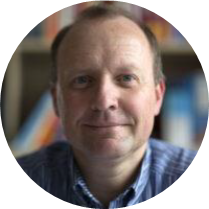
Prof. Dr. Thomas Jüstel was born in Witten, Germany in 1968. He studied chemistry and biology at the Ruhr University of Bochum from 1987 to 1992. He received his Ph.D. in coordination chemistry in 1995 in the group of Prof. Dr. Karl Wieghardt. Then, he was hired by the Philips Research Laboratories Aachen in autumn 1995 as a Research Scientist, where he started to work on luminescent materials. Some years later he became a Senior Scientist and then he was promoted to a Principal Scientist in 2003. In spring 2004 he became a professor for Inorganic Chemistry and Material Sciences at the Münster University of Applied Sciences. His research group “Tailored Optical Materials” deals with photochemistry, nanoscale and µ-scale luminescent materials for LEDs, UV radiation sources and x-ray detectors. Since 2013 he is the dean of the department “Chemical Engineering”. His work has been published in about 250 Peer-reviewed publications, several book chapters, and led to more than 200 patent families on luminescent compositions and their application in fluorescent lamps, plasma displays, x-ray detectors, and LEDs.
Keynote
Prof. Narcis Avarvari, University of Angers, France
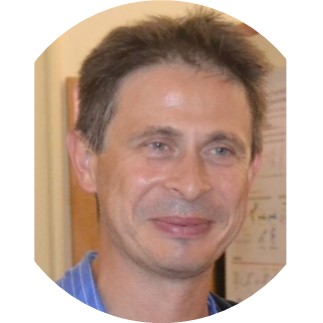
Narcis Avarvari started his academic formation in Iasi, Romania, at the University “Al. I. Cuza”, then he moved to Paris, France, as undergraduate student. He received his Master Degree in organic and organometallic chemistry from the Ecole Polytechnique and University Paris XI Orsay, and then his PhD in Chemistry in 1998 from the Ecole Polytechnique, Paris, under the supervision of Prof. François Mathey and Dr. Pascal Le Floch, working in phosphinine chemistry. After a one-year postdoctoral stay at the ETH Zürich with Prof. Hansjörg Grützmacher, he obtained in 1999 a CNRS permanent research position at the IMN in Nantes, and then he moved in 2001 to the University of Angers. He was promoted in 2010 as CNRS Director of Research (DR2), then DR1 in 2016, and he held between 2009 and 2022 an associate professor position at the Ecole Polytechnique, Paris. He was awarded with the 2007 Prize of the French Chemical Society, Coordination Chemistry Division, 2007 “Gheorghe Spacu” medal of the Romanian Chemical Society and he held invited professor positions at the University of Lund, Sweden (2013), the University Babes-Bolyai, Cluj-Napoca, Romania (2016) and at the Institute for Molecular Science (IMS), Okazaki, Japan (2022–2023). In 2020 he was elected member of the European Academy of Sciences (EurASC), Chemistry Division (https://www.eurasc.eu/). He has published 210 papers and gave more than 150 invited lectures and seminars at national and international congresses, conferences, workshops and in universities and research institutes. He is currently developing various projects related to conducting, luminescent and magnetic molecular materials derived from tetrathiafulvalenes (TTF), metal dithiolene complexes, functional helicenes and coordination polymers, coordination chemistry with d and f metals, and chirality related topics.
Invited Speaker
Prof. Jiang Li, Chinese Academy of Sciences, China

Jiang Li is a professor of Shanghai Institute of Ceramics, Chinese Academy of Sciences (SICCAS). Professor Li holds the PhD degree from SICCAS. Now he is the deputy director of the transparent ceramics research centre in SICCAS, the associate editors of the Journal of the American Ceramic Society and the International Journal of Applied Ceramic Technology, the editorial board members of the Journal of Advanced Ceramics, Magnetochemistry, Journal of Inorganic Materials, Advanced Ceramics, and Journal of Synthetic Crystals. Prof. Li’s research focuses on laser ceramics, scintillation ceramics, magneto-optical ceramics, fluorescent ceramics for white LED and laser lighting, long afterglow luminescent ceramics and transparent ceramics for windows. He has been invited to give topic and invited reports in the academic conferences for more than 50 times. He is the coordinator and participant in about 20 domestic and 5 international collaborative projects so far in the field of transparent and opto-functional ceramics. He produced 418 original papers (6894 Citations, 40 H-index) in refereed international and domestic journals, 3 co-authored textbooks and 2 co-authored book chapters.
Invited Speaker
Assoc. Prof. Maria Luisa Saladino, University of Palermo, Italy
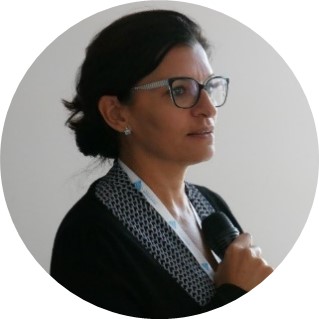
Maria Luisa Saladino is Associate Professor in Physical Chemistry in Department of Biological, Chemical, Pharmaceutical Sciences and Technologies (STEBICEF), University of Palermo (Italy). She received a PhD (Chemical Science) degree in 2008. Actually, she is delegate to the Third Mission of STEBICEF Department of the University of Palermo. She is author of about 120 publications in ISI Journals, 40 publications in proceeding books and book chapters, about 300 conference presentations/seminars/lectures, in the field of Physical Chemistry. She is Member of the Editorial Board of Scientific Report (https://www.nature.com/srep), Molecules (https://www.mdpi.com/journal/molecules) and Kermes (https://www.kermes-restauro.it/).
Research topics: developing of luminescent and persistent luminescent nanostructured materials; siliceous mesoporous materials for controlled release of biocides; innovative materials for conservation of cultural heritage; development of analytical methods for the investigation of artefacts in the field of Cultural; Heritage by using non-invasive techniques and multianalytical approaches.
Invited Speaker
Prof. Gerd H. Meyer, Aarhus University, Denmark
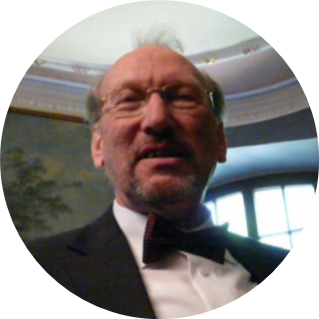
Gerd H. Meyer (born 1949) studied chemistry at Justus Liebig-Universität Giessen and has been a professor of (inorganic) chemistry at the Universities of Hannover (1988-1996) and Köln (Cologne, 1996-2014). After his official retirement, he has been affiliated at Iowa State University (USA), KTH (Sweden) and since 2023 at Aarhus University (Denmark). His research focused mainly on inorganic solid state (and coordination) chemistry where the rare-earth elements played an eminent role.
Invited Speaker
Prof. Stefan Lis, Adam Mickiewicz University in Poznan, Poland
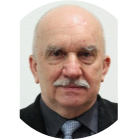
Stefan Lis is full professor since 2003 at Adam Mickiewicz University in Poznan, Poland. He conducts basic and application research in the field of various group of complexes and nanomaterials based on rare earths. His research concerns emission processes, structural and photophysical studies of lanthanide systems, including: development of new analytical methods for the determination of substances of biochemical importance based on lanthanide luminescence; physicochemical characterization of multifunctional nanostructures; core/shell nanoparticles doped with Ln3+ or Ln2+ ions and their surface functionalized systems; application in chemistry, biology, medicinal and analytical chemistry, etc.
He had also conducted scientific research in the Florida State University and was a research fellow or visiting professor at research centers in Japan, Czech Republic, Germany, Belgium, Spain, China and Brazil.
He supervised 15 doctoral theses. He is the author/co-author: ~300 scientific papers, 2 books, several book chapters, 9 patents (index H = 47), delivered over 100 invited (15 plenary) lectures at scientific conferences and congresses, and was the chairman and/or member of many scientific committees of international conferences; and PI of 11 research projects.
Invited Speaker
Assist. Prof. Michele Back, Ca’ Foscari University of Venice, Italy

Dr. Michele Back obtained his Master degree in Materials Science in 2013 and Ph.D. degree in Chemical Sciences in 2017 at the Department of Molecular Sciences and Nanosystems (DMSN) of Ca’ Foscari University of Venice. He obtained habilitation in 2020 and since 2021 he is Assistant Professor at the DMSN of Ca’ Foscari University of Venice. He was JSPS Postdoctoral Fellow at Kyoto University (Japan) from 2017 to 2019, research fellow at Centro di Riferimento Oncologico di Aviano (Italy) from 2020 to 2021 and JSPS Invitational Fellow at NIMS (Japan) in 2023. His research focused mainly on the design and development of luminescent (nano)materials (powders, ceramics, nanoparticles and thin films) with particular attention on fundamental and applied aspects of rare-earth, transition and post-transition metal-based compounds for photonics and advanced applications (e.g. imaging, anticounterfeiting, temperature and pressure sensing).
Invited Speaker
Prof. Eugeniusz Zych, University of Wrocław, Poland
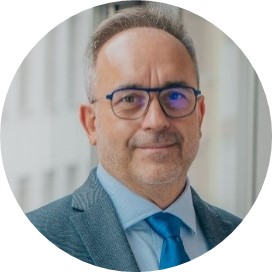
Professor Eugeniusz Zych obtained his PhD at the University of Wrocław in 1994, and in 1994-1997, he completed an internship at the Department of Chemistry, Boston University. He gave numerous invited speeches at conferences and universities all over the world. Prof. Zych managed over a dozen grants from domestic sources and several financed by the European Union or NATO and coordinated the consortium implementing the EU project LUMINET. He also carried out a research project for Philips. He supervised over a dozen doctors and dozens of master's students. His main scientific interests are research and development projects regarding energy-storing luminescent materials, ionizing radiation detectors, dosimeters, phosphors for energy-saving LED lighting and for horticultural purposes, as well as luminescent temperature sensors and multifunctional nanomaterials for biological and medical applications. He has published over 180 original scientific articles and three book chapters in the United States. Since 2009, he has been the head of the Luminescent Materials Group, in the years 2005–2012 he was the vice-dean of the Faculty of Chemistry, and in the period 2020–2022 he was the vice-rector for scientific research at the University of Wrocław. In 2017, he received the Minister of Science and Higher Education award; in 2023, he received a Golden Cross of Merit from the President of Poland. In 2023 he was elected the Chair of the Luminescence and Display Materials Division of the Electrochemical Society.
Invited Speaker
Dr. Rocío Rojas, Tallinn University of Technology, Estonia
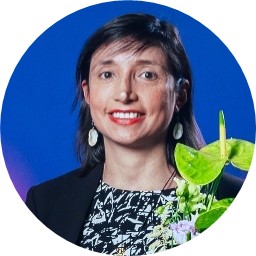
Rocio Rojas is a Senior Researcher at Tallinn University of Technology (TalTech), Tallinn, Estonia. She has over 13 years of experience working in the glass-ceramic and ceramic research field, developing functional nanostructured powders, bulks, films, photonic crystal with a strong expertise in luminescent but also in ferroelectrics and electromagnetic shielding materials. This unique multidisciplinary approach is devoted to a career developed in 5 different countries (Spain, Portugal, Brazil, France, Estonia).
Dr. Rojas leads the Advance Functional Ceramic Materials Research line in the Innovative materials for industrial applications Research Group in TalTech.
Her academic career started with a degree in Materials Engineering and Master’s degree in Physics and Laser technologies from the University of Salamanca. Afterwards Rocio Rojas pursued her PhD at Polytechnic University of Madrid, Spain.
Apart from her Research position in TalTech, she is the Director of the Engineering Sciences Doctoral Program specialty: “Production and Materials Engineering, Robotics, Transport and Logistics”. In addition, Dr. Rojas is founder of the Association of Spanish Scientists (ACEE) in Estonia.
Part of this research line includes the development of unique synthetic strategies for multifunctional luminophores, involving greener and strategic perspectives by reducing the consumption of critical materials. She has developed long-lasting luminescent materials, security and bio markers, nanophotonic up-conversion and down-conversion light-emitting crystals for photovoltaic applications, nanostructured phosphor films towards miniaturized devices and by modulating ferroelectric and piezoelectric domain motion in ceramic materials by coupling of light. Her interests lie in coupling light emission phenomena with physical functionalities and property-generating features in Nanostructured Ceramics.
Invited Speaker
Prof. Chong-Geng Ma, Chongqing University of Posts and Telecommunications in Chongqing, China
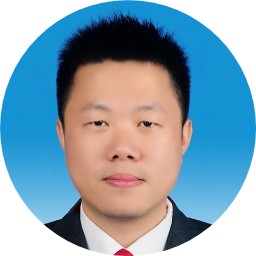
Prof. Chong-Geng Ma obtained his PhD in physics from University of Science and Technology of China in 2008. Following his doctoral studies, he held a postdoctoral research fellowship at University of Tartu from 2010 to 2013, supported by the European Social Fund. In 2017, he served as a visiting professor at University of Verona. In 2023, he was elected as a foreign member of the National Academy of Sciences of Tajikistan, highlighting his international recognition and expertise. Currently, he holds the positions of full professor and director at CQUPT-BUL Innovation Institute, Chongqing University of Posts and Telecommunications in Chongqing, China. His involvement extends beyond his academic roles. He serves as an associate editor of Optical Materials (Elsevier) and is the vice chairman of the division of Luminescent and Display Materials in the Electrochemical Society. Additionally, he contributes as an international project reviewer for Polish National Science Centre and Science Fund of the Republic of Serbia. His research interests focus on the first-principles and crystal-field design of luminescent materials. He has co-edited a book, authored three book chapters, and published over 140 papers in reputable journals such as Light: Science & Applications, the Journal of the American Chemical Society, Advanced Functional Materials, and Physical Review B. His contributions have been widely recognized, with over 4100 citations and an h-index of 34. Since 2012, He has been the principal investigator for over 15 national research projects in China, including the Sino-Poland collaborative research program. He has received several prestigious awards, including the Chongqing Natural Science Award and Chongqing International Science and Technology Cooperation Award. His expertise has also led him to chair important conferences, such as the 2023 Silk-Road Conference on Luminescent Materials and Devices: Sino-Poland. He has delivered over 50 invited talks at many renowned international conferences, including ICL, DPC, Phosphor Safari, and PRiME.
Invited Speaker
Dr. Markus Suta, Heinrich Heine University Düsseldorf, Germany
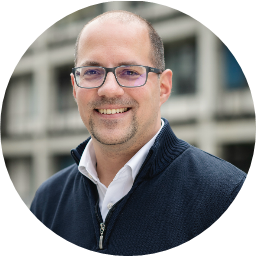
Markus Suta studied both Chemistry and Physics at the University of Siegen in Germany and obtained his PhD in Chemistry in 2017 in Claudia Wickleder’s group. He followed up with a postdoc at the University of Utrecht, the Netherlands in Andries Meijerink’s group. Since 2021, he holds a position as a tenure track assistant professor at the Heinrich Heine University Düsseldorf, Germany. His group combines solid-state chemistry with advanced photoluminescence spectroscopy and theoretical modelling to better fundamentally understand and design luminescent materials for various applications. He is currently also member of the “Young College” of the North-Rhine Westphalian Academy of Sciences and Arts.
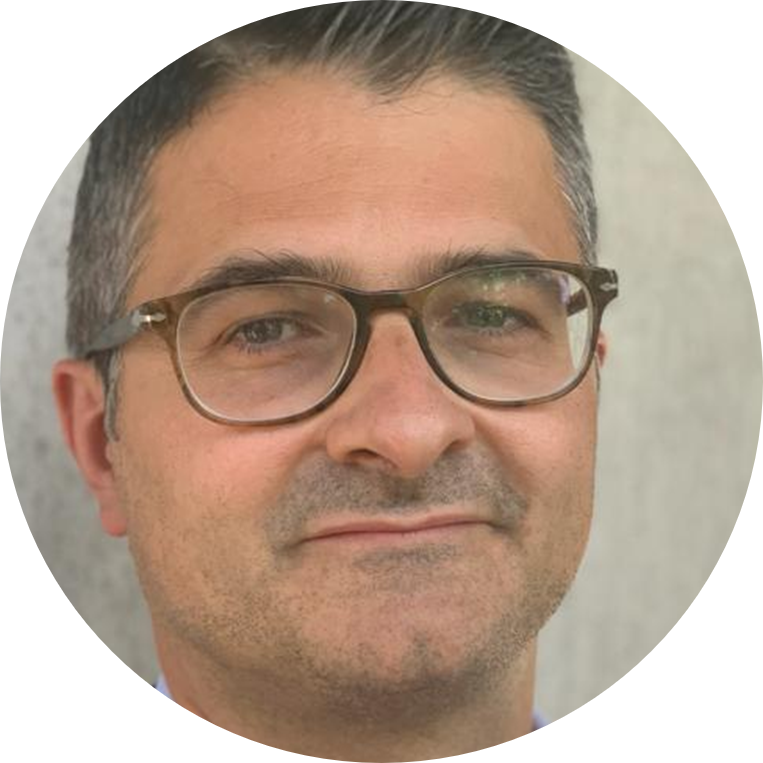
Professor Fabio Piccinelli obtained the PhD in Inorganic Chemistry in 2006 at the department of Chemistry “G. Ciamician” of the Bologna University. In 2008, he obtained a permanent research position at the University of Verona and since October 2016 he has been Associate Professor at the same University. During his career, He spent several months abroad as visiting scientist at the University of Sheffield (UK) in the research group of the Prof. Mike D. Ward and at the Institute of Low Temperature and Structure Research of the Polish Academy of Sciences inWroclaw (Poland) in the research group of the Prof. W. Strȩk. Fabio Piccinelli has co-authored 163 scientific publications (articles, communications and book chapters) on peer-reviewed international journals (more than 4500 citations). He presented many contributions (invited talks, oral communications and posters) at national and international scientific conferences. He participated in research projects funded by European community, by Italian Ministry of the University and Research (MUR) and by the Italian Ministry of Foreign Affairs. Fabio Piccinelli at the moment is the local coordinator of a project funded by Italian Ministry of the University and Research (MUR) and of an European MSCA staff exchange project. He has supervised several BSc and MSc students and 5 PhD theses in Organic and Inorganic Chemistry. Since 2014, He has been member of the editorial board of the journal Scientific Reports (Nature publishing group)
The main scientific interests of the Prof. Fabio Piccinelli are focused on the chemistry, structural characterization by means of X-ray diffraction and the optical and chiroptical spectroscopy of coordination compounds and inorganic matrix containing luminescent lanthanide ions.
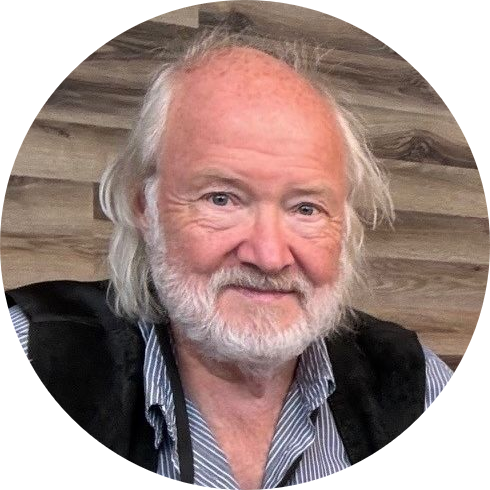
Professor Jorma Hölsä, born in 1952, was graduated in 1978 from the Helsinki University of Technology (presently Aalto University), Finland, and he received his PhD in 1983 also from the Helsinki University of Technology. He has been a Senior Lecturer at University of Dar es Salaam, Tanzania, from 1987 to 1989. Then, between 1989 and 1991 he has been a Professor at the Helsinki University of Technology, Department of Chemistry. Since 1992, he has been a full professor of inorganic chemistry at University of Turku, Finland. He has been a senior fellow of the Academy of Finland in 1992, 1996-1997 and 2000-2001. Lately, he has been a visiting professor at Universidade de São Paulo, Instituto de Química, Brazil during the years 2010 to 2012 as well as a special visiting researcher in the Ciência Sem Fronteiras (CSF) program of the CNPq, Brazil, between 2012-2014. In 2013, he was appointed Honorary Professor at the W. Trzebiatowski Institute of Low Temperature and Structural Research, Polish Academy of Sciences. Currently he is working in the Department of Physics at the University of the Free State in Bloemfontei, South Africa.
The research activity of Prof. Hölsä encompasses the wide fields of chemistry, physics and materials science of rare earths. In particular, this includes thermal behaviour of materials, luminescence and absorption spectroscopy, inelastic neutron scattering spectroscopy, simulation of the energy level schemes, simulation of the magnetic properties,. X-ray and neutron powder diffraction, structure solution from powder diffraction data, synchrotron radiation spectroscopies (XANES, EXAFS, VUV), defects in solid state: persistent luminescence and thermoluminescence, preparation and characterization of nanocrystalline materials, up-conversion luminescence of nanocrystalline materials and minerals’ luminescence. After building a solid reputation as a prime expert in the field of rare earth luminescence and the simulation of the energy level schemes of trivalent rare earths, professor Hölsä started to focus on the phenomenon of persistent luminescence in the beginning of the 2000s. Since that, he has clarified the current understanding of the persistent luminescence mechanism in Eu2+ doped compounds introducing simplicity and physical soundness. His work has led to the discovery and elucidation of the persistent luminescence mechanisms also in Eu3+, Tb3+, Ti3+ and to the unveiling of the mystery of the Bologna Stone. Moreover, he has introduced the use of techniques as e.g. XANES/EXAFS and DFT calculations in the study of persistent luminescence. He has carried out his research in wide international co-operation and collaboration, e.g. with Polish, French, Czech, Spanish and Brazilian groups. He is the author or coauthor >200 scientific papers and he has given hundreds of invited lectures in different conferences and meetings as in different universities and research institutes.
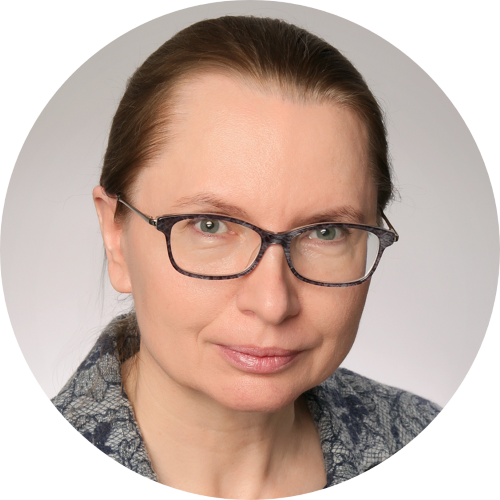
Paula Gawryszewska received her MSc Eng. in Chemistry from the Wroclaw University of Technology in 1991, habilitation in 2013 (the University of Wroclaw). She has been a full professor since 2021 at the University of Wroclaw, Poland. 1998/1999 she did a postdoctoral fellowship in Prof. J. Riehl's research group at Michigan Technological University, where she was involved in the design of structural probes for chiral complexes with high racemization rates using the CPE/CPL technique.
She has lectured at national and international conferences by invitation and has carried out many research projects. She has conducted extensive international cooperation.
Her research interests include: lanthanide coordination compounds in solids, solutions and polymeric matrices; luminescence spectroscopy of lanthanides (Ln) and Cu(I); energy transfer processes in Ln compounds; luminescence enhancement through plasmonic couplings with gold and silver nanoparticles (MEF phenomenon); Ln-based radiation converters with molecular magnet properties; magnetic-luminescent nanoparticles; dynamics of excited states.
Invited speaker
Prof. Dr. Anja-Verena Mudring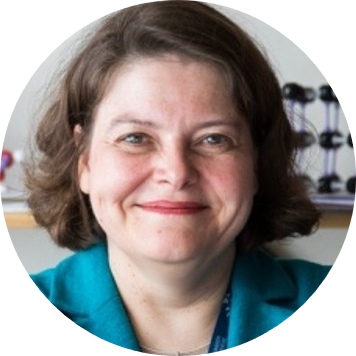
Anja-Verena Mudring studied Chemistry at the University of Bonn (D) and carried out her doctoral thesis at Max-Planck Institute for Solid State Research, D. As a Feodor Lynen Fellow of the Alexander von Humboldt foundation she worked at Iowa State University and the Ames Laboratory, USA. After completing her Habilitation at the Universität zu Köln (D) as a Liebig fellow, she held became a tenured Full Professor positions the Ruhr-Universität Bochum (D), Iowa State University (USA) and Stockholm University (SWE). She is presently working as a Villum Investigator at Aarhus University (DK), where she also is leading the SMARTER Center. She is also an Honorary Professor at the College of Engineering, University of KwaZulu-Natal, South Africa and Guest Professor at the Department of Physics, Umeå University, Sweden. Prof. Mudring is currently acting as editor-in-chief for the journals Green Chemistry Reviews & Letters and Polyhedron.
Her research motto is ¨Theory with Practice¨ and research in the Mudring group is driven by understanding fundamental structure-property relationships with the aim to design new materials for energy related applications for a sustainable society. Applications in focus are energy efficient lighting, (photo-)catalysis, magnetic refrigeration and thermoelectric energy conversion. All of which help, in a direct or indirect way, to meet the Sustainable Development Goals as being put forward in the United Nations Development Programme.
Invited speaker
Dr. Andrius Pakalniškis

Andrius Pakalniškis studied Chemistry at Vilnius University in Lithuania and obtained his Ph.D. in Chemistry in 2024 in Professor Ramūnas Skaudžius group. While a still a relatively new doctor he already visited numerous scientific groups in Strasbourg University, National Taipei University of Technology and Institute of Low Temperature and Structure Research in Poland. During his Ph.D. studies Andrius Pakalniškis focused on the investigation of novel multiferroic materials as well on luminescent garnets to a lesser extent. Particular attention was given to the investigation of doping induced structural transitions on BiFeO3 and hexagonal LuFeO3.
Invited speaker
Dr. Dovydas Karoblis
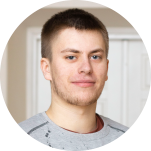
Dovydas Karoblis was born in 1995 in Pasvalys, Lithuania. He started his chemistry studies in Vilnius University 2014, and received his PhD in 2024. During his PhD study, he focused on preparation of various perovskite, pyrochlore, spinel and Ruddlesden-Popper structure having compounds via sol-gel and molten salt synthesis route. In particular, he investigates different molten salt synthesis parameters in order to obtain metastable compounds, like lanthanide-containing pyrochlore manganites.
Oral speakers
- Professor Volodymyr Amirkhanov, Doctor of Science, professor of the Inorganic Chemistry Department, National Taras Shevchenko University of Kyiv
- Professor Volodymyr Aleksandr Lushchik, Institute of Physics, University of Tartu
- Professor Joan Josep Carvajal Martí, professor at the Faculty of Chemistry, Rovira i Virgili University
